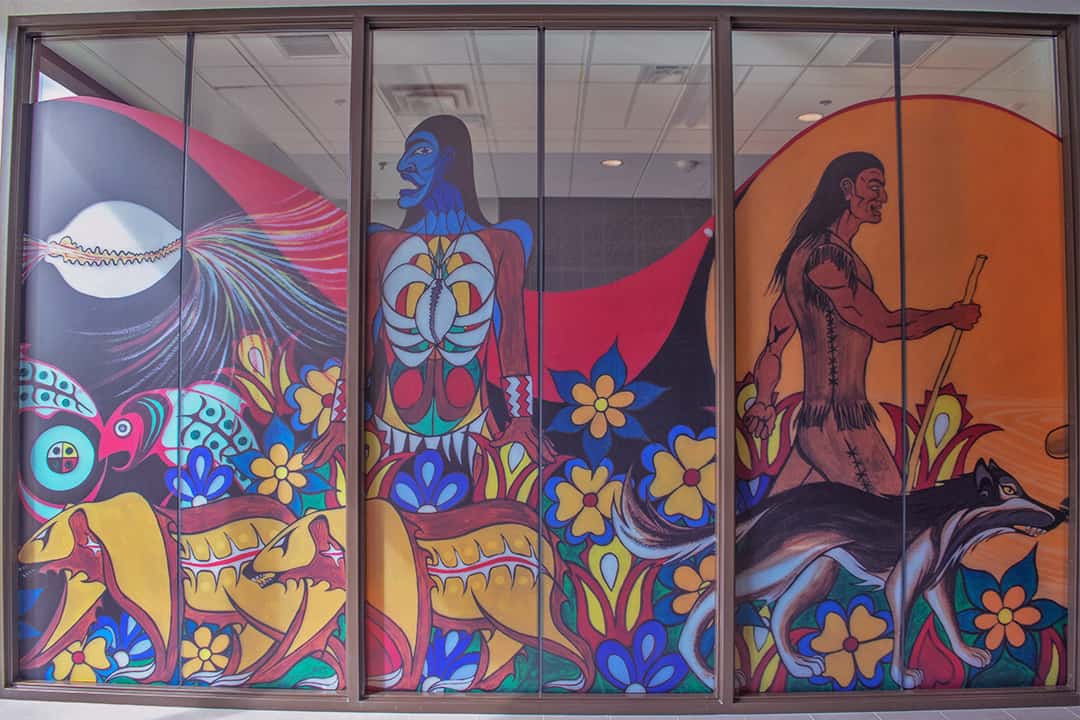In June, UTM announced the establishment of the new Mississaugas of the Credit First Nation (MCFN) office on its campus. UTM and the Indigenous Action Group (IAG) worked together to open the office.
The IAG is a group of UTM staff and faculty and MCFN members striving to preserve the MCFN’s educational goal at the university.
UTM and the IAG envisioned the office as a space for the MCFN to conduct its own business and research as well as foster a relationship of pedagogical collaboration between UTM and the MCFN. UTM currently offers ANT241 — Anthropology and the Indigenous Peoples of Turtle Island as part of this ongoing relationship.
The land occupied by the UTM campus is the traditional land of the MCFN, the Huron-Wendat and the Seneca.
In a written statement to The Varsity, MCFN Councillor Veronica King-Jamieson shared the significance of the office for the MCFN: “It’s a sacred space for MCFN to begin an honest dialogue and presence in the educational institutions within our territory using our knowledge structure.”
The new office is located on the second floor of the Maanjiwe nendamowinan building on the UTM campus.
Background
In 2017, the U of T Truth and Reconciliation Steering Committee released its report. The report outlined recommendations for the university to further its efforts toward Truth and Reconciliation in response to the 94 “Calls to Action” issued by the Truth and Reconciliation Commission (TRC) of Canada.
The TRC report includes a number of “Calls to Action” concerning education. These include improving education standards on reserves — federally owned land allocated to Indigenous communities — increasing funding for education on reserves, establishing university and college programs in Indigenous languages, etc.
According to Don Drummond — a former chief economist at the TD Bank — in 2016, national funding to schools on Indigenous reserves was 30 per cent less than the funding received by public schools not on reserves.
In 2015, as part of his election campaign, Prime Minister Justin Trudeau pledged to allocate $2.6 billion to education on reserves over four years. By 2018, numerous Indigenous communities claimed that they had yet to receive any increased funding to education.
The report from U of T’s Steering Committee presents 32 recommendations, focusing on creating spaces on U of T campuses for Indigenous representation, recruiting more Indigenous staff and faculty, and expanding the curriculum to incorporate Indigenous knowledge.
Following the report’s release, U of T has been working to implement all 32 recommendations.
The MCFN office is part of U of T’s larger plan to fulfill its commitment to Truth and Reconciliation.
The office
In a written statement to The Varsity, Tee Duke — assistant director, Indigenous Initiatives at UTM — discussed the planning process for the new MCFN office.
Although UTM began planning the office in 2019, the process was delayed by the COVID-19 pandemic.
“It was integral [that] the office planning and developments were carried out with MCFN’s guidance and consultation specifically with MCFN’s Education Board members whom we often would meet in person within the MCFN community,” wrote Duke.
King-Jamieson elaborated on the MCFN’s hopes from the office: “The MCFN educational vision is for all the educational institutions on the territory of the MCFN to know who we are by creating space for us to teach our knowledge to all learners.”
“The glass walls of the MCFN office constructed at UTM campus includes part of our creation story, taken from photos of the art mural panels currently in MCFN LSK Elementary school,” commented King-Jamieson on the MCFN’s involvement in the office’s construction.
“It’s imperative that we, as Indigenous people, see ourselves represented on campus because this contributes to creating a welcoming, safe, and inclusive environment for our community,” wrote Duke. “We have only just begun in terms of creating Indigenous spaces and I am excited for what the paths lies ahead for us – our community here at UTM.”
Looking ahead, Duke hopes for more opportunities in Indigenous placemaking that focus on the creation of physical spaces as well as embed Indigenous knowledge, language, and land-based learning.


